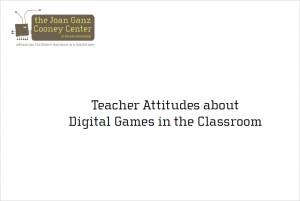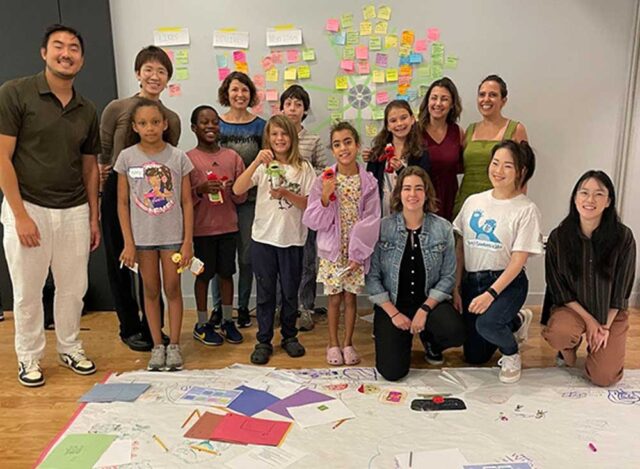
Combining the breadth of a national survey with the depth that case studies can provide, the Joan Ganz Cooney Center and BrainPop have used these two research tools to gauge teacher’s attitudes and beliefs about the effect classroom video game use has on student learning, developmental growth and social behavior. This national survey of 505 teachers on video game use in the classroom, released at the New Schools Venture Fund Summit, surfaced recommendations for future educational game development and advocacy. The overall goal of this research is to connect the documented experiences of teachers with other research about video games and learning, and to provide media‐rich illustrations about innovative classroom practice that can be made available to a variety of audiences. The five video case studies are available online.
A summary of the findings can be downloaded as a PDF.
The first video case study profiles Joel Levin, a school technology integrator who works with second graders at Columbia Grammar and Preparatory School in New York City. Through his use of MinecraftEDU, a version of the popular commercial game Minecraft modified for educational purposes, Joel leads his 2nd grade class through structured game-based scenarios that emphasize self-directed learning, collaboration, and positive social interactions.
The second video shows how Ginger Stevens, a 6th grade special-education teacher at Quest2Learn in New York City, utilizes the intentionally game-like environment of her school to maximize learning for students with special needs.
Lisa Parisi, the subject of the third video, makes excellent use of freely available games from BrainPOP and Manga High to engage her 4th grade students in challenging math and science content, as well as promote self-directed and project-based learning in her Denton Avenue Elementary School classroom in New Hyde Park, NY.
The fourth video features Steve Isaacs, a Technology Instructor at William Annin Middle School in Basking Ridge, New Jersey, as he shares how he integrates video game design and development into his 7th grade curriculum.
And the fifth case study profiles the work of a team of teachers and technologists at St. Philip’s Academy, a K-8 school in Newark, NJ, as they slowly begin integrating digital and partner games into the curriculum.
The survey and case studies are a project of the Games and Learning Publishing Council.


